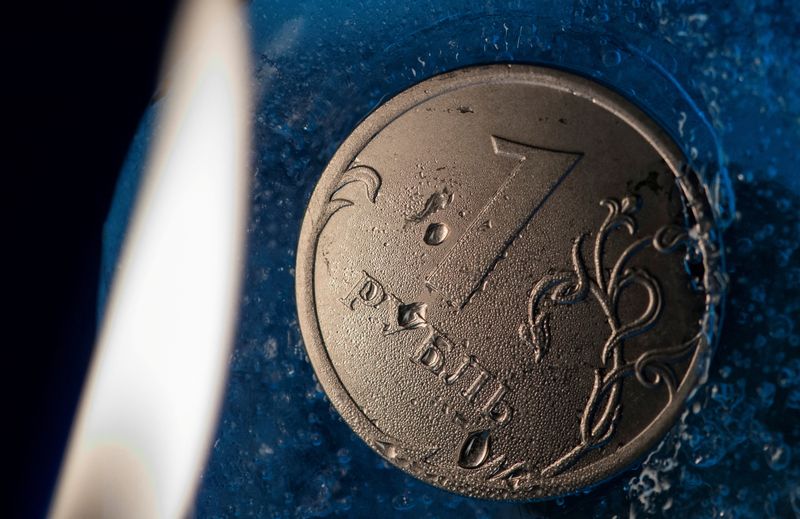MOSCOW (Reuters) – New U.S. sanctions that forced Russia’s top exchange to halt dollar and euro trading resulted in a range of different prices and spreads as trading moved to the over-the-counter (OTC) market on Thursday, making it difficult to access reliable prices for Russian currencies. currency.
The Russian central bank set the official ruble-dollar exchange rate for Friday at 88.21, implying a strengthening of about 0.9% from the previous close. But the sanctions have caused confusion over how to determine the currency’s exact value.
On the interbank market, the ruble traded between a 10-day low of 90.25 and a nearly one-year high of 86.28, eventually rising 0.4% to 88.62.
The central bank calculated its official rate based on over-the-counter trading, instead of the previous method that relied heavily on trading on the Moscow Exchange, Russia’s leading financial market.
Washington’s sanctions on the Moscow Exchange and, crucially, its clearing agent, the National Clearing Center (NCC), had been expected since Russia’s full-scale invasion of Ukraine in February 2022, but the move still caught the market by surprise.
The sanctions led to the suspension of trading in US dollars, euros and Hong Kong dollars on the Moscow Exchange. The US has said it is seeking to reduce the flow of money and goods used to support Russia’s war in Ukraine.
The Moscow Exchange is part of Russia’s critical financial infrastructure, but the latest sanctions are thought to have limited impact on Russia’s ability to continue selling its oil and gas internationally as Moscow has already redirected much of its trade flows to China and other Asian countries.
“Over the past two years, the role of the US dollar and euro in the Russian market has been consistently declining,” the central bank said on Thursday.
The yuan overtook the dollar to become the most traded currency along with the ruble in Moscow, which accounted for 54% of the foreign exchange market in May.
The ruble stabilized at 12.22 against the yuan and hit a near-year high of 11.8430 earlier in the session.
Russia’s ruble-based MOEX index fell to a near six-month low in early trading before erasing losses to close unchanged at 3,171.7 points. Moscow Exchange shares fell about 15% and then declined about 3.1%.
VOLATILITY, WIDE SPREADS
“Sanctions against key institutions of the Russian financial sector are the most serious over the past year and a half after the introduction of the oil embargo and restrictions on oil prices,” note BCS World of Investments analysts.
According to BCS, about 60% of foreign exchange trading from January to April took place on the over-the-counter market, which provides a sufficient basis for the formation of the official exchange rate.
“At the same time, the absence of a single trading platform will lead to an increase in spreads on foreign exchange transactions by banks.”
Banks, companies and investors can no longer trade the US dollar or euro through a central exchange, which provides benefits such as liquidity, clearing and oversight.
Instead, the opaque over-the-counter market will dominate, where transactions are conducted directly between two parties.
“The new sanctions should not affect the ruble exchange rate in the medium term,” said Yuri Popov, strategist at SberCIB Investment Research. “In the short term, exchange houses may experience high volatility and wide spreads.”

Some major brokers have blocked accounts in dollars, euros and Hong Kong dollars, making deposits and withdrawals unavailable.
Sberbank, Russia’s dominant lender, said it was not seeing increased demand for foreign currency at its branches and its exchange rates were unchanged from yesterday.


